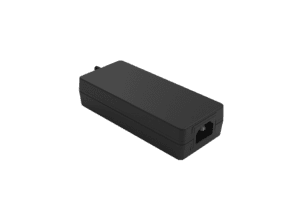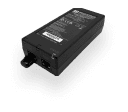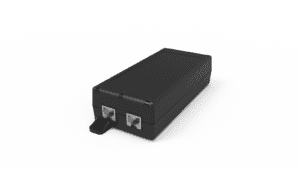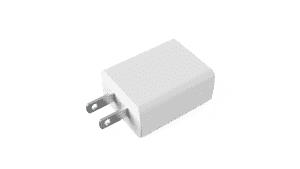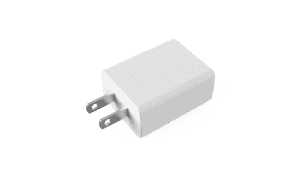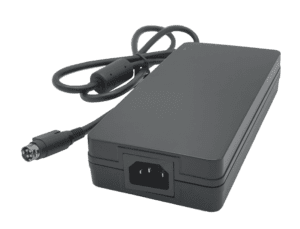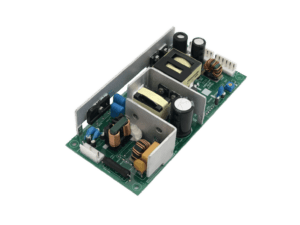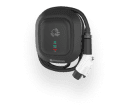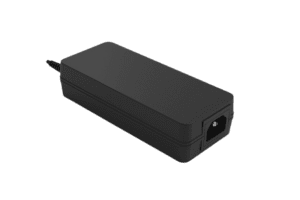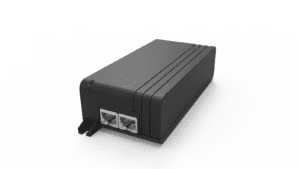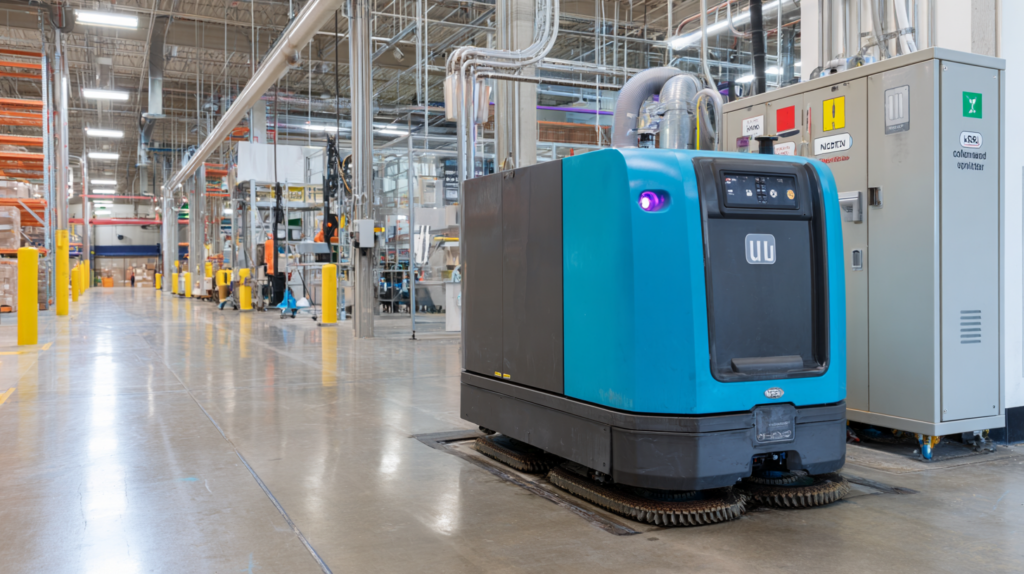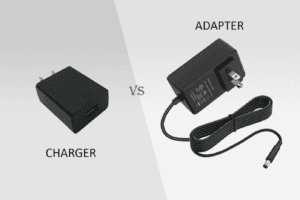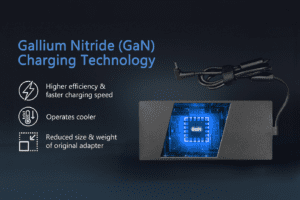BLOG
Service Robot Battery Charger OEM: How to Meet UL 2593 Safety Standards for Floor-Scrubber Robots
Table of contents
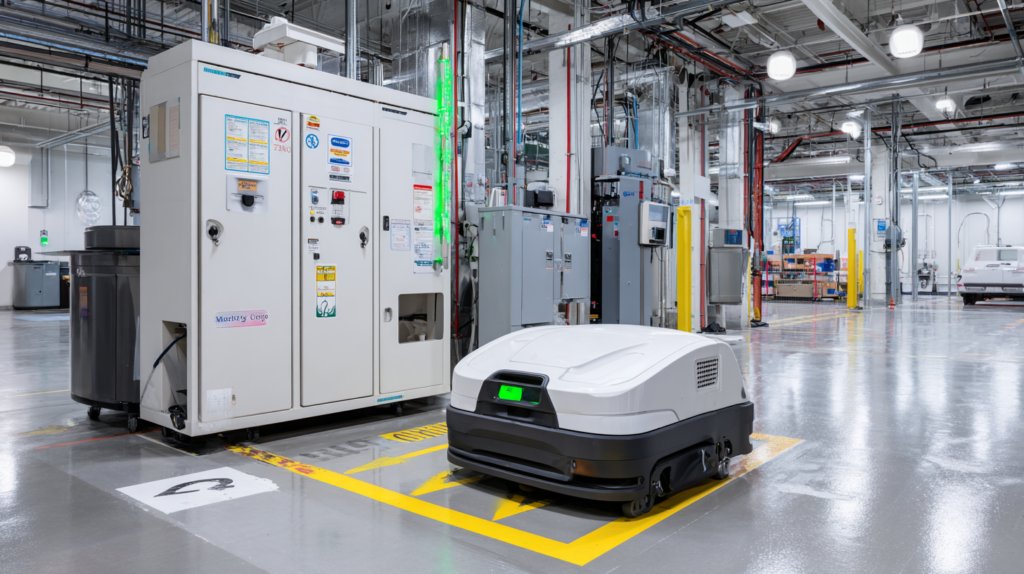
As service robots become essential in commercial cleaning operations, particularly in airports, malls, and hospitals, the demand for safe, efficient battery charging solutions has skyrocketed. Floor-scrubber robots work tirelessly in high-traffic areas, often during off-hours, and their downtime must be minimal. However, the challenge for OEMs isn’t just keeping them charged—it’s ensuring that the charging process meets the UL 2593 safety standard for battery-operated appliances.
UL 2593 sets forth rigorous requirements for battery chargers and related components, aiming to reduce hazards like electric shock, overheating, and fire. For manufacturers and integrators of battery charger systems, aligning with UL 2593 isn’t just about compliance—it’s about building trust, safety, and long-term performance into your robotic solutions.
This article breaks down how to design and produce service robot battery chargers that are both high-performance and UL 2593-compliant, offering real-world insights for OEMs working with floor-scrubber robots and other automated service equipment.
Understanding UL 2593: Why It’s Crucial for Service Robots
UL 2593 is the primary North American safety standard for battery chargers in floor-cleaning robots and other service appliances. It governs electrical, mechanical, and thermal risks, especially where unattended charging occurs.
Top Features
- Protection against overcharge, short circuit, and ground fault conditions
- Flame-retardant housing and insulation materials
- Compliance with leakage current limits and dielectric strength tests
- Mandatory automatic shutoff or charge control features
Top Benefits
- Ensures safety in public-facing environments such as malls, hospitals, and airports
- Reduces liability exposure for OEMs and system integrators
- Builds customer trust and accelerates procurement approvals
- Facilitates easier product certification and market access
Best Practices
- Always start your design with UL 2593 as a core requirement—not a later add-on
- Collaborate with UL testing labs during early development stages
- Use PCB layout guidelines that prioritize isolation and creepage distances
- Implement redundant fault detection circuits
UL 2593 is more than a box to check—it’s the backbone of safe and scalable service robot deployment.
Designing Battery Chargers That Comply with UL 2593
The core of UL 2593 compliance lies in smart, safe electrical engineering. The charger must autonomously manage battery health while eliminating risks under both normal and fault conditions.
Top Features
- Intelligent battery management system (BMS) integration
- Auto shut-off circuitry upon full charge detection
- Real-time current, voltage, and temperature monitoring
- Built-in safeguards like thermal fuses and overvoltage protection
Top Benefits
- Prevents battery damage and extends lifespan
- Maintains safe temperature and power flow during charge cycles
- Provides diagnostic feedback for predictive maintenance
- Reduces fire and thermal runaway risks
Best Practices
- Use high-quality MOSFETs and wide-temperature-rated capacitors
- Implement current limiting through precision op-amps or dedicated ICs
- Design for redundancy: dual-sensor feedback loops improve safety
- Ensure firmware is failsafe and regularly updatable
Designing for UL 2593 means your charger doesn’t just work—it protects, monitors, and reacts in real time.
Selecting the Right Materials and Enclosures
UL 2593 mandates the use of materials that resist flame, shock, and environmental degradation. Your enclosure and internal components play a major role in passing safety tests.
Top Features
- Flame-retardant plastics with UL 94 V-0 rating or better
- Shielded wiring with high dielectric strength
- Tamper-resistant casing with clear labeling
- Touch-proof connectors to protect users from live terminals
Top Benefits
- Prevents enclosure melting or ignition during thermal events
- Isolates internal heat away from battery compartments
- Protects users and technicians during maintenance or failure
- Enhances product aesthetics without compromising safety
Best Practices
- Avoid ABS in high-temperature or enclosed installations—use PC+ABS blends
- Use gaskets and seals that are UL recognized for wet cleaning environments
- Apply potting compounds to isolate high-voltage zones
- Add drain holes or vents for humidity and condensation control
Failing a materials test under UL scrutiny can derail an entire product launch—so build with compliance in mind from day one.
CLIENT'S QUOTE
"Phihong’s PoE solutions have made a huge difference for us! Our network runs more efficiently, and we’ve seen real cost savings. We couldn’t be happier!"
Electrical Isolation, Grounding, and Leakage Current Control
UL 2593 requires safe electrical operation under all possible conditions—including faults. Grounding and insulation are critical to avoid electric shock, especially in cleaning environments with wet floors.
Top Features
- Double insulation between primary and secondary circuits
- Functional grounding with low-impedance paths
- Leakage current suppression circuitry
- Dielectric withstand testing to 1,500–3,000V AC
Top Benefits
- Keeps users and equipment safe from high-voltage discharge
- Meets hospital-grade safety criteria for healthcare facility use
- Ensures compatibility with GFCI-equipped wall sockets
- Reduces EMI emissions during high-load charging
Best Practices
- Design isolation barriers that exceed UL creepage/clearance minimums
- Include self-diagnostics for ground fault and insulation resistance
- Validate grounding with both functional and protective layers
- Choose transformers and opto-isolators rated for reinforced insulation
Electrical isolation is the line between safety and hazard—don’t leave it to chance.
Communication Protocols and Smart Safety Integration
Modern floor-scrubber robots require smart chargers that not only charge batteries but also communicate status and safety information in real time.
Top Features
- CANBus, RS-485, or UART communication with onboard robot control systems
- Charge status LEDs and diagnostic fault codes
- Memory logging for charge cycles, temperature, and voltage patterns
- Remote shutdown or override functions in case of malfunction
Top Benefits
- Allows remote monitoring and troubleshooting
- Supports predictive maintenance strategies
- Increases user confidence and visibility into charger performance
- Reduces unplanned downtime and service costs
Best Practices
- Design with failsafe communication: if the signal is lost, charging halts
- Log charger temperature and internal current draw with timestamps
- Provide over-the-air update capability for firmware and safety protocols
- Add dashboard alerts when battery or charger enters high-risk state
A smart charger isn’t just convenient—it becomes part of your safety infrastructure.
Field Deployment and Maintenance of UL 2593-Compliant Chargers
UL compliance doesn’t end at the lab. OEMs must consider how chargers will be deployed, cleaned, inspected, and maintained over time.
Top Features
- Easily replaceable fuses and temperature sensors
- Modular design for quick field repairs or upgrades
- Waterproof charging connectors (IP65+) for floor-scrubber environments
- Cable management hooks and anchors for safe installation
Top Benefits
- Reduces downtime and service calls
- Supports rapid deployment across large cleaning fleets
- Ensures continued safety even after years of daily use
- Simplifies training for facilities and maintenance teams
Best Practices
- Label every charger with unique ID and compliance markings
- Provide maintenance SOPs including visual checks and cleaning steps
- Encourage battery health checks every 6 months
- Log UL test certificates and safety documentation in customer dashboards
Service robot charging systems are mission-critical infrastructure. Treat them like it.
How Phihong USA Helps You Meet UL 2593 Standards
Phihong USA delivers advanced charging solutions specifically designed for OEMs in the service robot and industrial cleaning markets. Our battery chargers, power modules, and BMS-integrated power supplies are engineered to meet or exceed UL 2593 requirements—ensuring safety, performance, and peace of mind.
We offer full engineering support, including safety consultation, thermal simulation, PCB layout validation, and documentation required for UL certification. Whether you’re building compact charging docks or networked charging bays for robotic fleets, Phihong brings decades of experience and a commitment to reliability.
Reach out to Phihong to explore how our OEM-ready components can accelerate your compliance and scale your floor-scrubber robot systems safely.

Contact Our Team Today!
Our dedicated sales team and international partners are prepared to support you with your latest projects and initiatives globally.
Explore More with Phihong USA
As we conclude our exploration of PoE technology, it’s evident how these innovations are streamlining power and data integration across various industries. Phihong USA stands at the forefront of this technological advancement, offering a diverse range of power solutions designed to meet the evolving needs of modern industries.
Phihong USA’s extensive product lineup includes:
- Power over Ethernet (PoE) Solutions: Delivering reliable power and data transmission over a single cable, ideal for simplifying network installations and reducing costs.
- AC/DC Adapters and Power Supplies: From compact adapters to industrial-grade power supplies, Phihong provides solutions that ensure efficiency and reliability in various applications.
- Battery Chargers: Customizable chargers for lithium-ion and lead-acid batteries, supporting a wide range of power requirements for mobility and industrial applications.
- Medical Power Supplies: Specialized power solutions designed to meet the stringent requirements of the healthcare industry, ensuring safety and reliability.
Phihong USA is committed to innovation and excellence, continually developing products that meet the highest standards of performance and reliability. Their global reach and dedication to customer support make them a trusted partner in powering the future.
Here are some useful links to explore Phihong USA’s offerings further and bring in new potential clients:
Visit Phihong USA to discover how their advanced power solutions can support your business needs. Whether you’re looking to upgrade your network, or find reliable power supplies, Phihong USA has you covered.
By choosing Phihong USA, you’re partnering with a leader in power technology, ensuring your operations run smoothly and efficiently with top-tier power solutions. Contact Us today!
FAQ
What is UL 2593, and why is it important for robot chargers?
UL 2593 is the UL safety standard for battery chargers used in floor cleaning machines and other service appliances. It covers a wide range of risks including electrical shock, overcurrent, overheating, and fire hazards. This standard ensures that chargers can safely operate in public or semi-public environments, like shopping centers or hospitals. For OEMs, UL 2593 compliance isn’t optional—it’s required by most commercial procurement processes and building codes. The standard also builds trust with users and simplifies liability management, making it an essential benchmark when developing or sourcing chargers for floor-scrubber and service robots.
How can OEMs design battery chargers that meet UL 2593?
OEMs can design UL 2593-compliant battery chargers by focusing on four key areas: thermal safety, electrical isolation, intelligent control, and materials compliance. Start with flame-retardant materials (UL 94 V-0 or better) for enclosures, integrate thermal fuses and overcurrent protection, and ensure isolation between high-voltage and user-accessible components. Use smart charging controllers with real-time monitoring and auto shutoff features. Involve UL testing labs early in the design process and validate against dielectric and leakage current tests. Most importantly, treat UL compliance as a foundational design element, not an afterthought.
What materials are required to meet UL 2593 safety standards?
Materials must meet flame resistance, impact resistance, and environmental tolerance benchmarks to comply with UL 2593. Commonly used materials include polycarbonate, PC+ABS blends, and powder-coated aluminum for enclosures. Internal wiring should be UL-rated and shielded to handle high temperatures and EMI. All materials should pass UL 94 V-0 flame testing at a minimum. Seals and gaskets need to resist chemicals and water (common in cleaning environments), while thermal and electrical insulation must be reinforced and durable. Avoid consumer-grade plastics or untested components in commercial applications.
What are common failure points in unsafe robot battery chargers?
Common failures include overheating due to inadequate thermal management, short circuits from poor insulation, and mechanical damage from low-grade enclosures. In some designs, failure to isolate low-voltage and high-voltage components can lead to electric shock hazards. Additionally, cheap MOSFETs, capacitors, or non-redundant temperature sensors can degrade quickly under repeated charge cycles, causing erratic performance. Another major oversight is the lack of proper grounding or leakage current suppression, which is a red flag in any UL inspection. Each of these failures could not only void compliance but also lead to injury or damage.
Does Phihong offer UL 2593-compliant charging solutions?
Yes, Phihong USA offers OEM-ready charging modules and power adapters that are UL 2593-compliant or designed to meet UL requirements. We work closely with OEMs to provide fully integrated solutions, including documentation and design support needed to achieve certification. Our power supplies include high-temperature components, advanced safety circuits, and UL-certified enclosures. Whether you’re looking for a complete plug-and-play system or custom BMS integration, we can provide the components and engineering expertise to help your product meet the standard confidently.

